Remember when amusement parks were more about simple joys and less about high-tech thrills? Before massive corporate entertainment complexes dominated the landscape, local parks with wooden roller coasters, cotton candy stands, and carousel music created memories that have lasted a lifetime. Those vintage parks offered something that today’s mega-attractions often miss—a certain charm where families could enjoy affordable fun without endless lines or app reservations, and where the scent of caramel apples mingled with the distant laughter of children experiencing their first carnival ride.
1. Coney Island’s Steeplechase Park (Brooklyn, NY, 1897-1964)
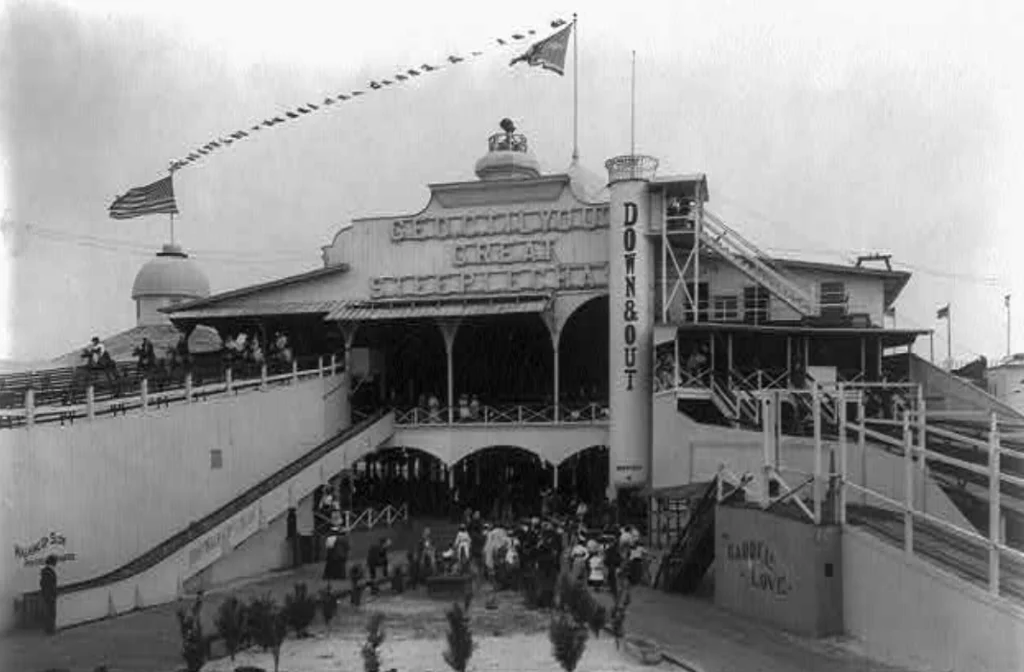
Long before modern theme parks, Steeplechase Park beckoned visitors with its iconic smiling face entrance known as “Funny Face” that became synonymous with carefree Brooklyn summers. The mechanical horse race that gave the park its name invited couples to ride side-by-side, creating countless romantic memories for young sweethearts who would later tell their grandchildren about meeting “at the Steeplechase.” Creator George C. Tilyou famously rebuilt after a devastating 1907 fire, posting a sign the next day that read: “Admission to the burning ruins—Ten cents.” NYC Parks explores additional highlights of this venue forgotten by time.
The Pavilion of Fun housed dozens of playful attractions including spinning disks, moving floors, and air jets that would send ladies’ skirts flying upward (causing quite the commotion in more modest times). Steeplechase maintained its appeal through changing decades, providing affordable entertainment through the Great Depression and becoming a symbol of resilience for working-class New Yorkers seeking escape from daily troubles. Its eventual demolition in 1966 marked the end of an era for Coney Island, though its spirit lives on in nostalgic remembrances of a time when amusement parks were built on laughter rather than expensive technological innovations.
2. Riverview Park (Chicago, IL, 1904-1967)
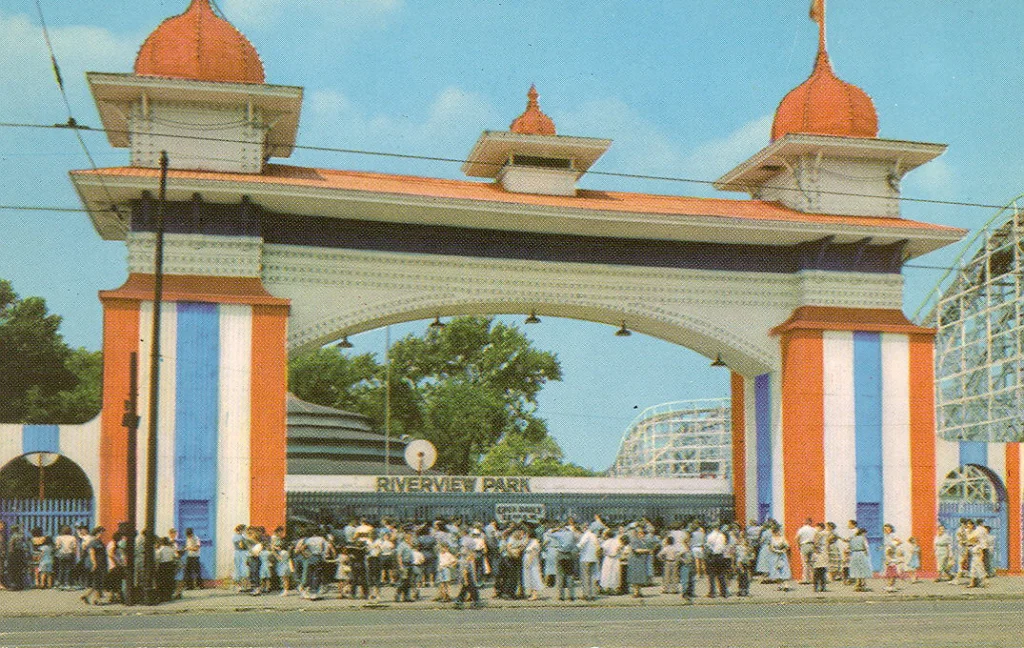
Known as “The World’s Largest Amusement Park” in its heyday, Chicago’s Riverview Park sprawled across 74 acres with nearly 120 attractions that made it the destination for Midwestern families seeking affordable thrills. The park’s iconic Pair-O-Chutes tower could be seen from miles away, becoming as much a part of Chicago’s landscape as the emerging skyscrapers downtown. Riverview’s famous Bobs roller coaster delivered white-knuckle thrills with its 85-foot drop that had riders convinced they might fly right out of their seats. WTTW explores not just the history of this park but its resounding legacy.
The Aladdin’s Castle funhouse created some of the park’s most enduring memories with its moving floors, spinning disks, and the unforgettable “spinning barrel” that knocked the feet out from under unsuspecting visitors. Saturday afternoons at Riverview became a cherished tradition for generations of Chicagoans who could purchase a streetcar ticket that included park admission for just pennies. When Riverview closed rather suddenly in 1967, the city lost more than just an amusement park—it lost a democratic playground where factory workers and executives alike shared laughs on common ground.
3. Euclid Beach Park (Cleveland, OH, 1895-1969)
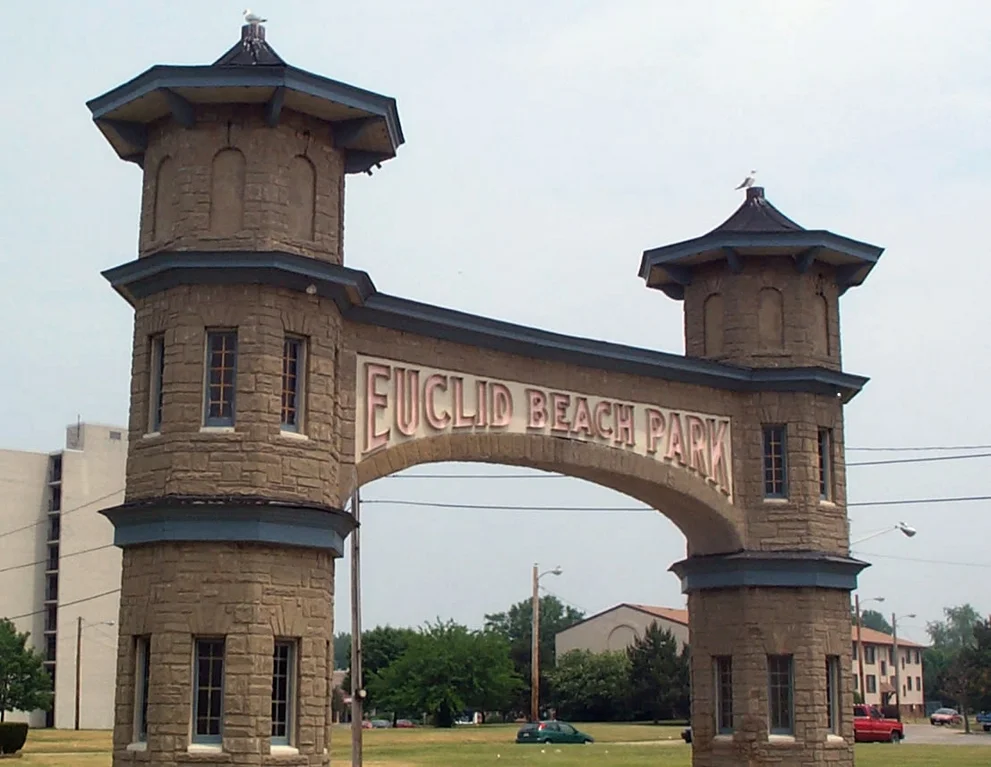
Cleveland’s beloved Euclid Beach Park became famous for its strict but appreciated policies: no alcohol, no rowdiness, and no improper behavior—creating a family-friendly environment parents could trust. The park’s hand-carved carousel was so beloved that when the park closed, community members rallied to preserve it—it now operates in the Cleveland History Center, still spinning with the dreams of generations past. Euclid Beach’s famous popcorn balls and taffy kisses became so iconic that the recipes were preserved, allowing today’s Clevelanders to taste memories that would otherwise exist only in fading photographs. Cleveland Historical has chronicled additional facts and particulars about this park, whose unique character just isn’t present in parks elsewhere.
The park’s wooden roller coasters—the Racing Coaster, Thriller, and Flying Turns—created legions of coaster enthusiasts who still gather at reunions to discuss the unique rumble and sway that modern steel coasters can’t replicate. Euclid Beach’s grand dance pavilion became the social center for romantic encounters, where countless couples shared first dances to big bands under twinkling lights reflecting off Lake Erie. When the final season came in 1969, entire families wept openly during their last rides, understanding that something precious was disappearing from Cleveland’s cultural fabric—a communal gathering place that had united the city across decades of profound social change.
4. Palisades Amusement Park (New Jersey, 1898-1971)
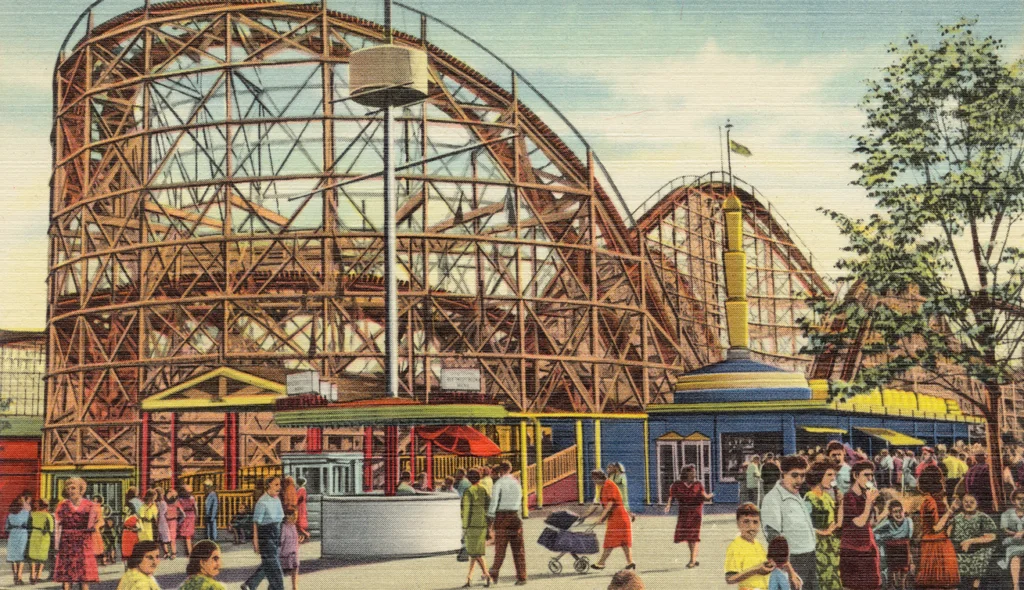
Perched on the New Jersey Palisades overlooking the Hudson River and Manhattan skyline, this beloved park was immortalized in the 1962 hit song “Palisades Park” by Freddy Cannon. The park’s massive saltwater pool—promoted as “the world’s largest”—became a summer sanctuary during heatwaves, with capacity for over 8,000 swimmers escaping the sweltering city across the river. Palisades Park manager Irving Rosenthal pioneered many promotional concepts still used today, including “pay one price” wristbands and celebrity appearances that brought stars like Abbott and Costello to mingle with everyday families.
The Cyclone roller coaster and free-fall ride called “The Chute” created the soundtrack of summer for generations—screams of delight mixing with calliope music and barkers inviting passersby to try their luck at games of chance. Despite being just a ferry ride from Manhattan, Palisades offered affordable entertainment for working-class families, with mothers spreading picnic blankets while fathers challenged the strength-testing machines. The park’s closure in 1971 to make way for high-rise condominiums represented more than just the loss of rides and attractions—it marked the disappearance of accessible entertainment for ordinary folks who couldn’t afford fancy vacations but deserved extraordinary memories.
5. Kennywood Park (West Mifflin, PA, 1899-Present)
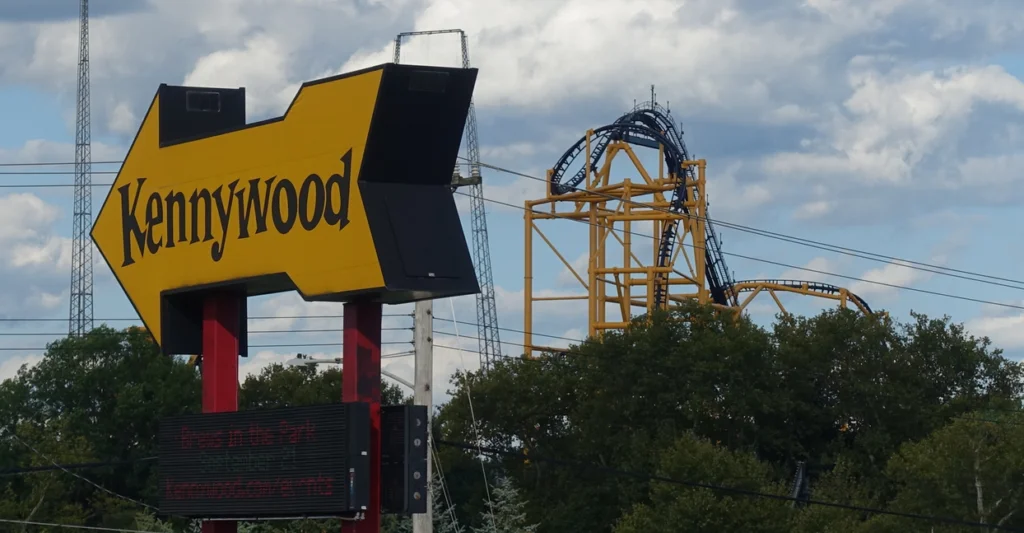
Unlike many vintage parks that disappeared, Kennywood succeeded in preserving its historic charm while carefully evolving—maintaining three classic wooden coasters (the Jack Rabbit, Racer, and Thunderbolt) that have thrilled riders since the 1920s. The park’s preservation efforts earned it National Historic Landmark status, recognizing its significance as a time capsule of early 20th century amusement park architecture and engineering. Kennywood’s famous potato patch fries—freshly cut, crispy potatoes doused in salt and served in paper cones—have remained unchanged for generations, creating lines that families willingly endure for a taste of tradition.
The park’s Old Mill, remodeled several times but dating to 1901, remains one of the oldest operating amusement rides in America, taking couples on a gentle boat journey through darkened tunnels. Kennywood’s charm comes partly from its unique terrain, built on a plateau with ravines that create natural divisions between areas of the park, making each section feel like a separate world of wonder. For Pittsburgh’s blue-collar families, Kennywood’s annual “picnic days”—when specific companies would rent the entire park for their employees—became the highlight of summer, with factory workers sharing rides with their supervisors and creating workplace bonds that extended beyond the clock.
6. Idora Park (Youngstown, OH, 1899-1984)
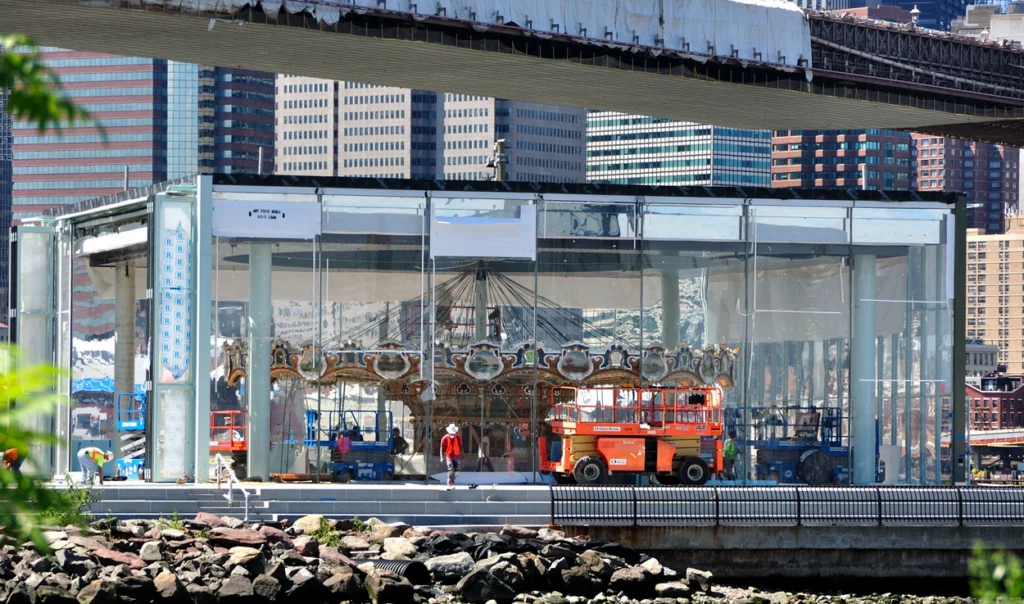
Youngstown’s beloved Idora Park began as a trolley park designed to increase weekend ridership, but quickly became the cultural heart of this steel-manufacturing town. The Wildcat roller coaster, designed by legendary coaster creator Herbert Schmeck, developed a reputation among enthusiasts as one of the finest wooden coasters ever built, with a first drop that seemed to extend the boundaries of physical possibility. The park’s magnificent carousel, crafted by master carvers from the Philadelphia Toboggan Company, featured jumpers and standers so beautifully detailed that each became a temporary steed for children whose everyday lives offered little such splendor.
Idora’s ballroom hosted big bands during the swing era, with couples gliding across its massive maple dance floor while catching glimpses of the twinkling park lights through enormous windows. During the steel industry’s prosperous years, Idora represented Youngstown’s confident spirit—a place where mill workers celebrated birthdays with family outings complete with ice cream and thrilling rides. The park’s tragic 1984 fire and subsequent closure paralleled Youngstown’s economic decline after the steel mills shuttered, creating a double loss that the community still processes decades later—the physical structures disappeared but the shared memories continue to unite former residents at regular reunions.
7. Glen Echo Park (Glen Echo, MD, 1891-1968)
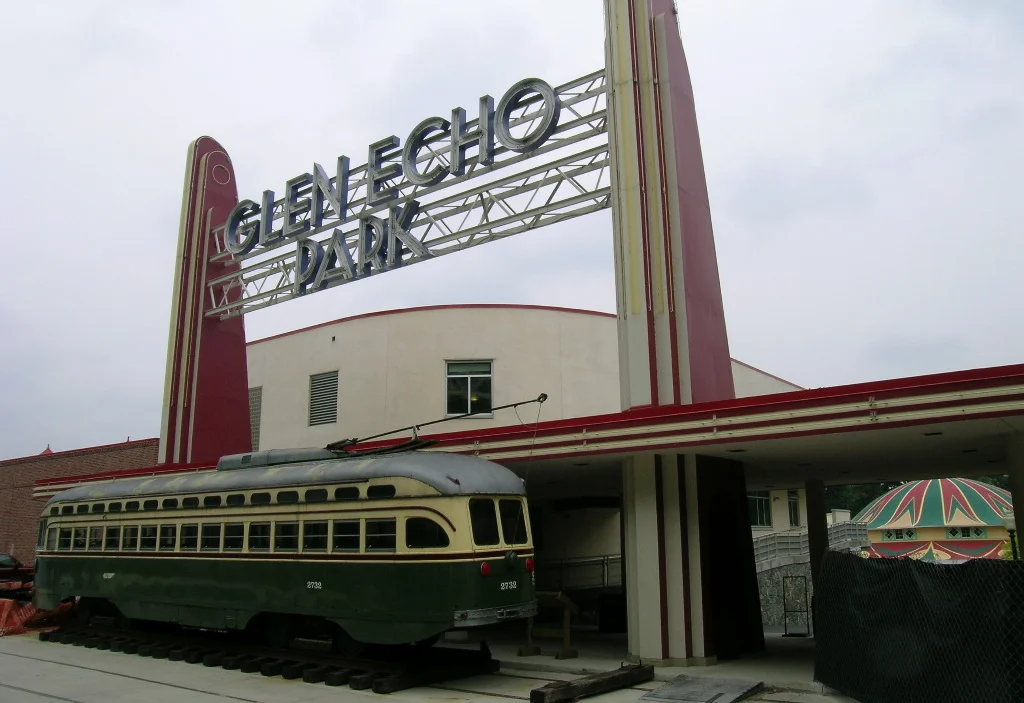
Just a trolley ride from Washington D.C., Glen Echo Park became famous for its magnificent Dentzel carousel with 52 hand-carved animals and its spectacular Spanish Ballroom where government workers would shed their office personas each weekend. The Crystal Pool provided relief from swampy D.C. summers, with capacity for 3,000 swimmers and a sandy beach that created a vacation atmosphere for those who couldn’t escape the capital’s heat. Before becoming an amusement park, Glen Echo began as a Chautauqua retreat for education and cultural enlightenment—a heritage that would eventually save its structures when the amusement era ended.
Glen Echo’s darker history includes years of segregation policies that were finally broken in 1961 through peaceful protests, making it an important landmark in the civil rights movement. The park’s art deco and Spanish revival architecture created a distinctive atmosphere unlike the simple county fair aesthetic of many contemporary amusement parks. Though the rides stopped operating in 1968, Glen Echo found new life as an arts and cultural center where the restored carousel still spins and the ballroom hosts dance events—a rare case where a vintage amusement park evolved rather than disappeared completely.
8. Playland (Rye, NY, 1928-Present)

Westchester County’s magnificent Playland was America’s first planned amusement park, designed as a complete artistic unit rather than the usual hodgepodge of attractions added over time. The park’s pristine Art Deco architecture earned it National Historic Landmark status and a starring role in the 1988 film “Big,” when Tom Hanks’ character made his famous wish on Zoltar at the arcade. The Dragon Coaster, with its 85-foot drop and signature tunnel through a dragon’s open mouth, has remained the park’s centerpiece since 1929, thrilling multiple generations of New York families.
Playland’s boardwalk and beach along Long Island Sound offered a complete summer experience—from swimming and sunbathing to arcade games and ice cream treats all within view of the water. Unlike many early amusement parks built by private investors, Playland was created as a public recreation facility by the Westchester County government, ensuring its attractions remained reasonably priced for average families. Its survival into the 21st century represents a rare success story in historic preservation, proving that with proper care and community support, the magic of vintage amusement parks need not be relegated solely to memory.
9. Cedar Point (Sandusky, OH, 1870-Present)
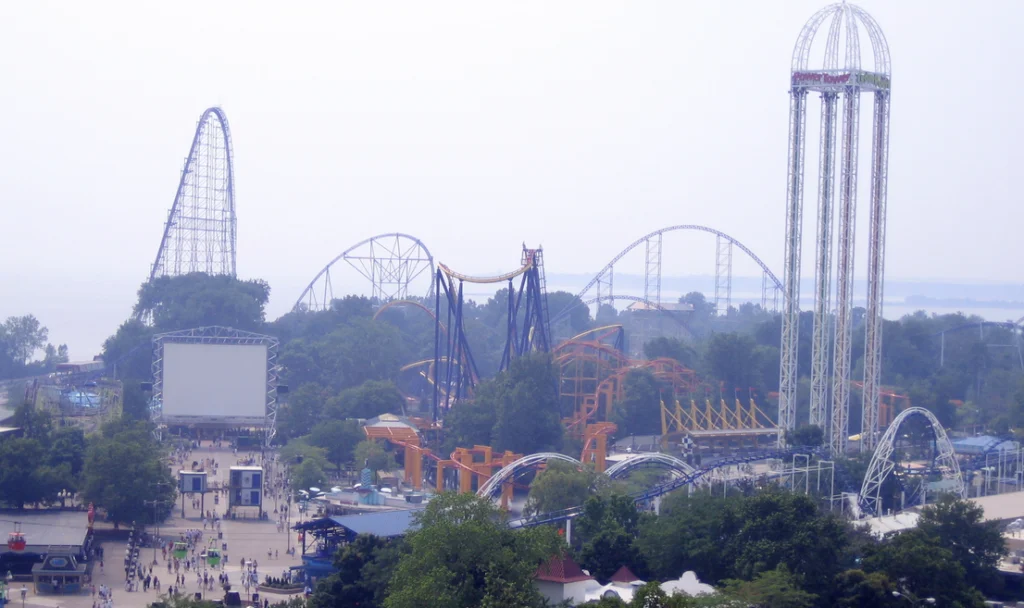
Cedar Point stands as America’s second-oldest operating amusement park, evolving from a simple bathing beach with a beer garden into the “Roller Coaster Capital of the World.” The park’s Hotel Breakers, opened in 1905, represented the grand resort era when families would stay for extended vacations rather than single-day excursions common today. Cedar Point’s Frontiertown area, complete with steam railroad and authentic 19th-century buildings, transported visitors to the Wild West long before elaborate themed lands became standard at major parks.
The park’s Coliseum complex housed one of the Midwest’s largest ballrooms where big bands drew enormous crowds, and later hosted rock concerts featuring emerging artists from Chuck Berry to The Beach Boys. While continuously modernizing with record-breaking coasters, Cedar Point maintained connections to its heritage by preserving structures like the Pagoda gift shop and the majestic Grand Carousel with its band organ music echoing across the midway. Unlike most parks from its era that succumbed to financial pressures or changing entertainment tastes, Cedar Point successfully navigated the transition from traditional amusement park to modern theme park without sacrificing its historical soul.
10. Lakeside Amusement Park (Denver, CO, 1908-Present)
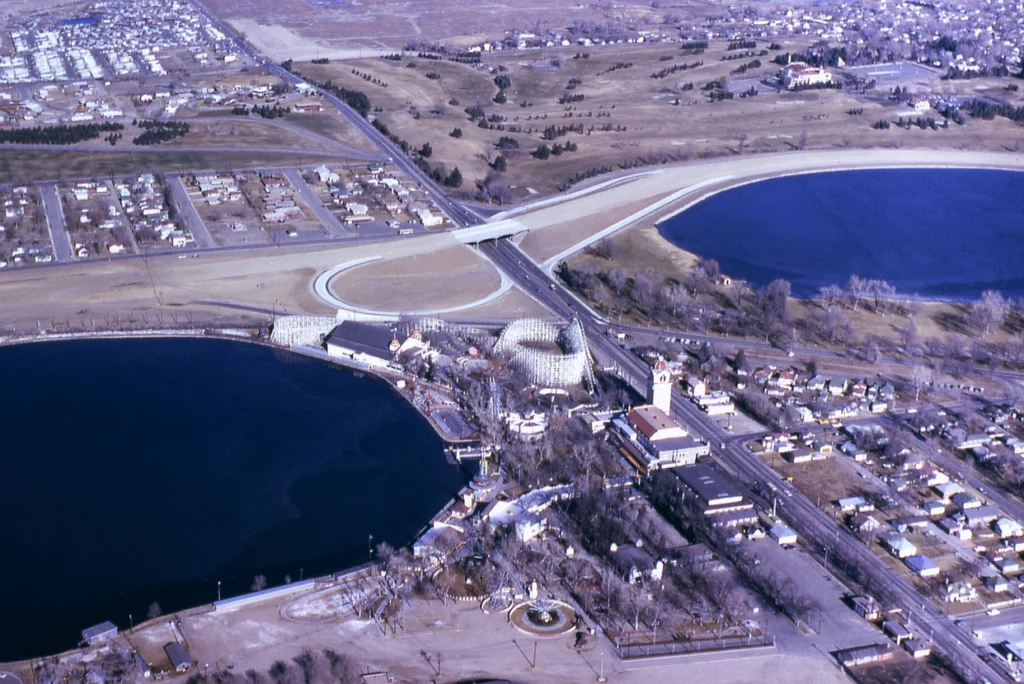
Denver’s Lakeside opened as “White City” in the early 20th century, named for its thousands of twinkling lights that transformed the night sky and created a landmark visible for miles across the Colorado plain. The park’s magnificent Tower of Jewels, covered in lights and colored glass, became Denver’s most recognizable landmark, predating modern city skyscrapers and standing as a beacon of pleasure in a region still carrying the rugged identity of the American frontier. The Staride lift provided breathtaking views of both the Rocky Mountains and the Denver skyline—natural grandeur competing with human engineering for visitors’ awe.
Lakeside’s vintage 1940s Cyclone wooden coaster still delivers airtime moments that modern computer-designed rides struggle to replicate, while operating with the distinctive rumble and sway that creates white-knuckle excitement. The park’s art deco entrance has welcomed generations of Colorado families seeking affordable entertainment, particularly during the Great Depression and WWII when such diversions provided crucial psychological relief from everyday hardships. Though now operating on a smaller scale than in its heyday, Lakeside’s survival represents the perseverance of family-owned amusement businesses against corporate competition—its ticket prices remain remarkably affordable in an industry where admission costs often exclude working-class families.
11. Lagoon (Farmington, UT, 1886-Present)
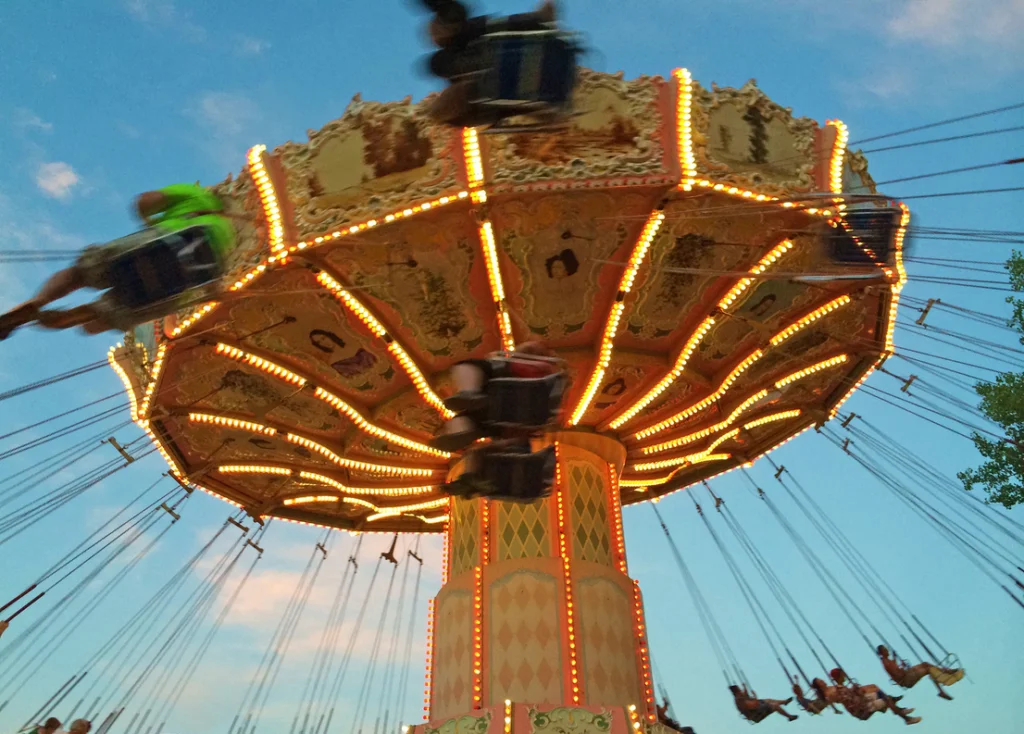
Lagoon Park began as a simple bathing resort beside the Great Salt Lake, evolving into Utah’s premier amusement destination through over 130 years of continuous operation and family ownership. The park’s Roller Coaster (its actual name) dates from 1921 and remains one of America’s ten oldest wooden coasters still in operation, delivering airtime thrills that have initiated generations of Utah children into the brotherhood of coaster enthusiasts. Despite suffering multiple devastating fires throughout its history, Lagoon rebuilt each time, with its historic carousel—salvaged from another park’s destruction—symbolizing the preservation of amusement heritage while moving forward.
The park’s Mormon cultural context created a unique family-focused environment relatively free from rowdy behavior that plagued many early amusement parks in larger cities. Lagoon’s famous Terroride dark ride has operated since 1967, maintaining its charmingly low-tech scares rather than upgrading to modern digital effects—preserving the handcrafted quality that defined classic amusement attractions. The park’s endurance through economic depressions, world wars, and changing entertainment trends speaks to its deep integration with Utah’s cultural identity as a place where multiple generations gather for shared experiences that transcend the typical excitement of rides and games.
12. Seabreeze Park (Rochester, NY, 1879-Present)
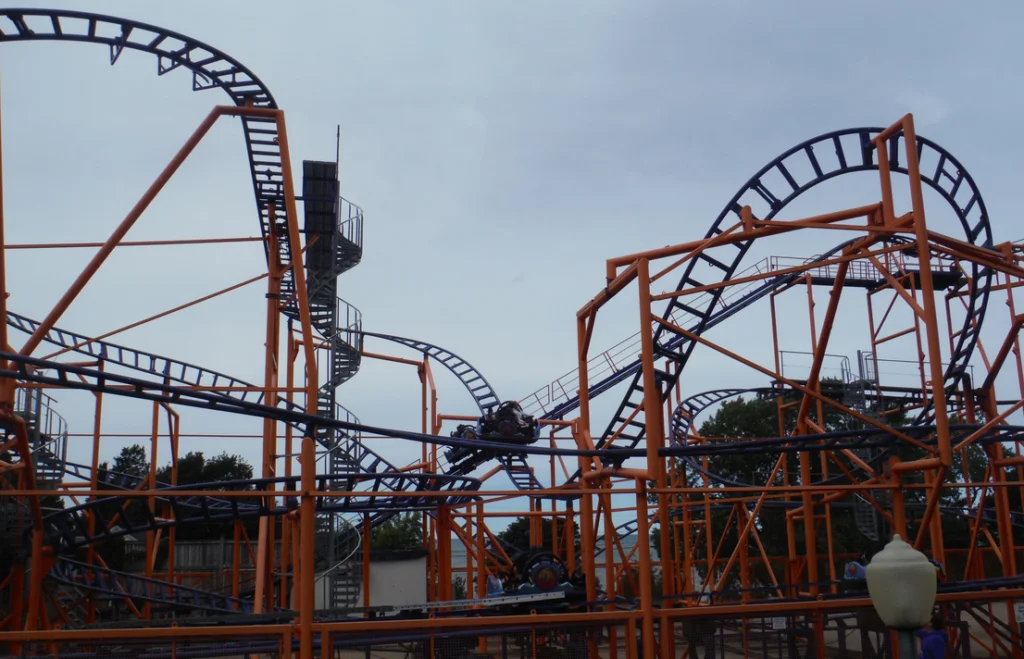
Rochester’s Seabreeze Park has maintained continuous operation since the Victorian era, making it one of America’s oldest amusement destinations and a testament to multigenerational family ownership. The Jack Rabbit roller coaster, operating since 1920, provides the distinctive airtime moments that only classic wooden designs deliver—a physical experience increasingly rare in an era dominated by computer-engineered steel coasters. The park’s lakeside location continued the traditional connection between water recreation and mechanical amusements, with generations of Rochester residents learning to swim at its beach before graduating to thrill rides.
Seabreeze’s Carousel Cafe still serves the same recipe of French fried potatoes that has drawn lines since the 1930s—proving that sometimes the simplest traditions create the strongest memories. Unlike many historic parks that expanded beyond recognition or disappeared entirely, Seabreeze maintained a modest size that preserved its intimate atmosphere where parents could allow older children a measure of independence impossible at today’s massive theme parks. The park’s survival through changing entertainment trends, devastating fires, and economic challenges demonstrates how deeply these pleasure grounds embedded themselves in American community life—not merely as places of amusement but as repositories of shared experience connecting generations through common joy.
In a world of virtual reality and screen-based entertainment, these vintage amusement parks offered something increasingly precious—genuine human connection through shared physical experiences. Whether racing down a wooden coaster’s first drop, struggling to maintain dignity on a funhouse floor, or simply sharing cotton candy on a park bench while watching the evening lights come on, these parks created moments when families truly saw each other, free from daily distractions. While some have survived and others live only in memory, their collective legacy reminds us that sometimes the simplest pleasures—a carousel ride, a perfect summer evening, laughter shared across generations—create the most enduring magic of all.


